 Facebook
Facebook
 X
X
 Instagram
Instagram
 TikTok
TikTok
 Youtube
Youtube
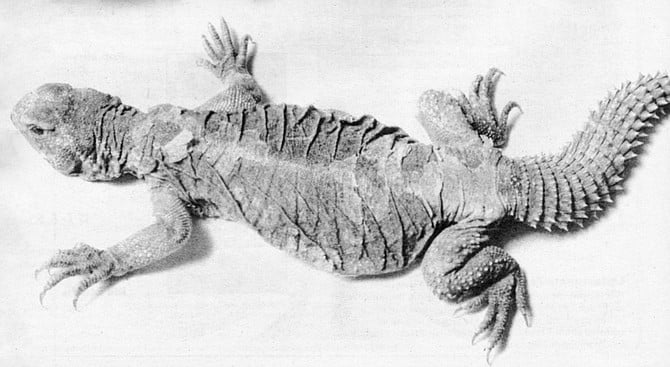
It was sheer proximity that charmed me. His claws were as thin as embroidery floss unraveled, and he had a wisp of grass on his head, which gave him an agreeably foolish air. If he hadn’t been so terrified, I might have touched his smooth-skinned head, which was thinner than my index finger, or his oval body, barely two inches long. His tail was longer than the rest of him, and it narrowed to a fine, dusty cord.
By Laura McNeal, June 27, 1996 | Read full article
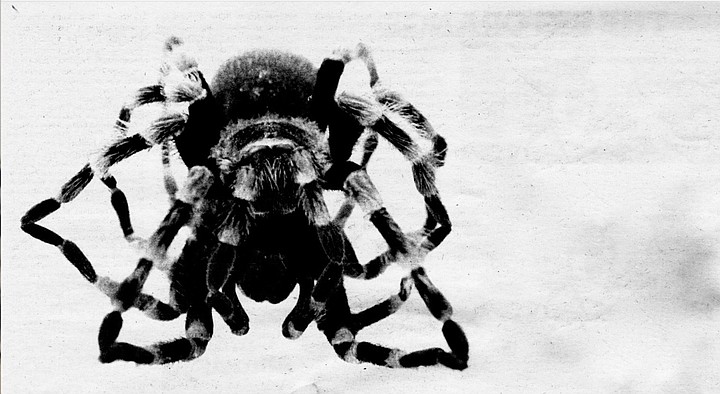
If, by some chance, you are bitten by a tarantula, or a Hairy Mygalomorph, fear not. “They have very little venom, if any," said Faulkner. “If you are bitten you can expect just a localized reaction and two fang marks. Their bite is probably less harmful than a bee sting. There are some in South America that are considered deadly, but when I say that. I'm referring to a case where someone had an allergic reaction."
By MertonGaudette, Jan.26, 1978 | Read full article

I think San Diego is more beautiful because of them, creatures with wingspans so wide that they seem to wobble when they beat; who glide low and heavily and smoothly like elegant patrol planes; who can climb so effortlessly and then drop like stones to the water surface, creating splashes so huge that each dive is a separate comedy. But I wonder if it would have made a difference if pelicans had simply vanished from the globe?
By Jeannette De Wyze, April 19, 1979 | Read full article
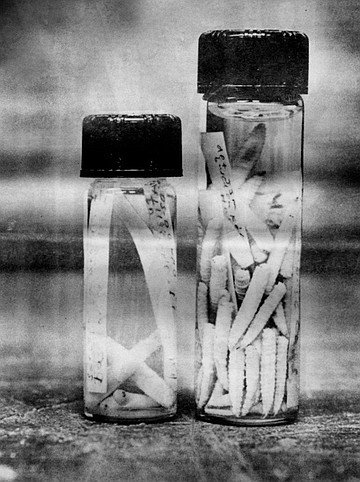
“Moths will occasionally show up. For instance, someone had purchased a home in the Firestone area of Los Angeles. Back of the house, there was an old shed, and the new owners noticed something sticking out of the ground. They dug around, and there was a human foot. Police came, exhumed the body. The body had been wrapped in a wool blanket, and as the police were unwrapping it, moths flew out of its abdominal cavity.”
By Judith Moore, May 17, 1990 | Read full article

“They couldn’t kill them with any of the biological toxins, nor with botulism or anthrax. The condors have a tremendous immune system. There’s almost nothing they can’t eat. They hunt with their noses, and the deader something is, the better they like it. So perhaps the California condor holds the genetic key to improve our own immune system? Who is anyone to say that we can let condors die out because all they do is eat dead stuff?”
By Stephen Dobyns, Sept. 28, 1995 | Read full article

Six days later, on a morning when the air was light blue, the weasel left his kill on the driveway, a young opossum so dead that his stiff tail seemed to grow straight out of the concrete. I say the weasel killed him, but I’m going by his bad reputation in hen houses, his preference for blood and brains when food is plentiful, his tendency to grab the neck and bite the soft parts of the skull.
By Laura McNeal, Oct. 3, 1996 | Read full article
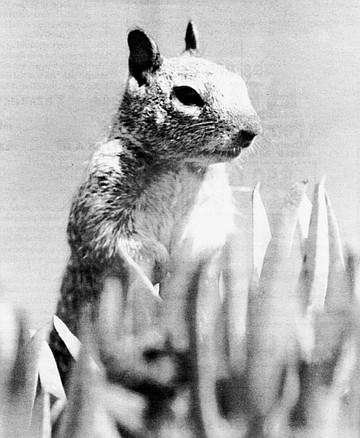
He was tidy about it, really, as far as mollusk-eating permits. He held the shell in both hands and sat like a quarterback at an all-you-can-eat buffet. When he succeeded, as he munched, in pulling the snail out, the shell fell away whole, which may have given him the thrill that comes of pulling a crab leg out of its shell. I’m a carnivore, but I couldn’t eat so much as a fruit for two hours.
By Laura McNeal, Nov. 28, 1996 | Read full article
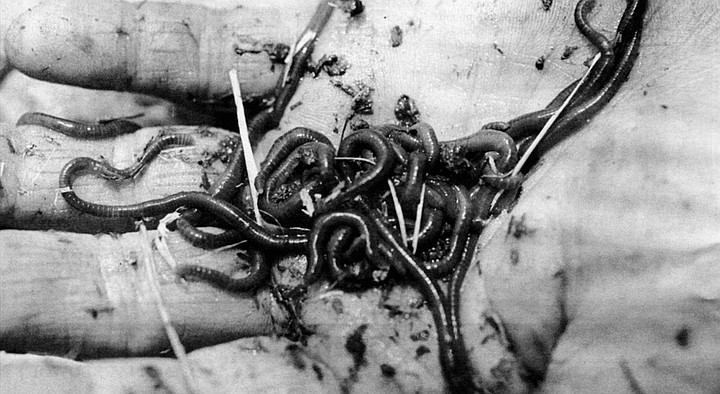
I didn’t want to cut off any heads. The truth about vermian regeneration is complicated. Take the beefy night crawler, who has 150 body segments. If you cut off 11 of his front segments, he’ll grow 4 or 5, and he’ll be shorter, but he’ll be fine. Hack off his behind to the 35th segment, and he’ll grow a new tail end, but a cut after the 11th and before the 36th segment is almost always fatal.
By Laura McNeal, June 12, 1997 | Read full article

A few days later, we noticed rats in the carport. They ran along the cupboards when we parked our cars. They scurried along the stacks of lumber, balanced on coils of irrigation hose, and tore soft cardboard from boxes of nails. They no longer bore any resemblance to Stuart Little. We killed them with blue cubes of rat poison that makes them bleed to death internally. By Sunday, the carport was still.
By Laura McNeal, Dec. 11, 1997 | Read full article
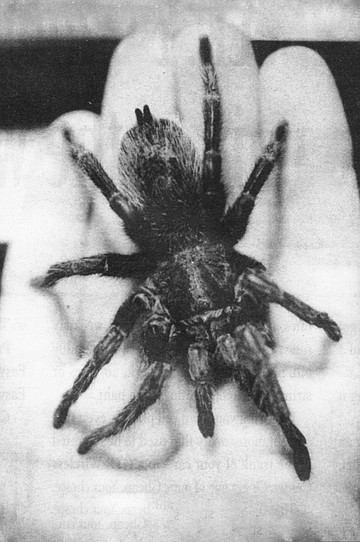
The only pleasure I saw him take was in water. He loved fresh water. He like to stick his whole head in the saucer and submerge himself. He stayed utterly still, soaking, for three to five minutes, his behind raised up on the lip of the saucer, five legs in the water and three on the old vermiculite. Then he crawled around for a while, leg over leg over leg over leg over leg over leg.
By Laura McNeal, Jan. 22, 1998 | Read full article
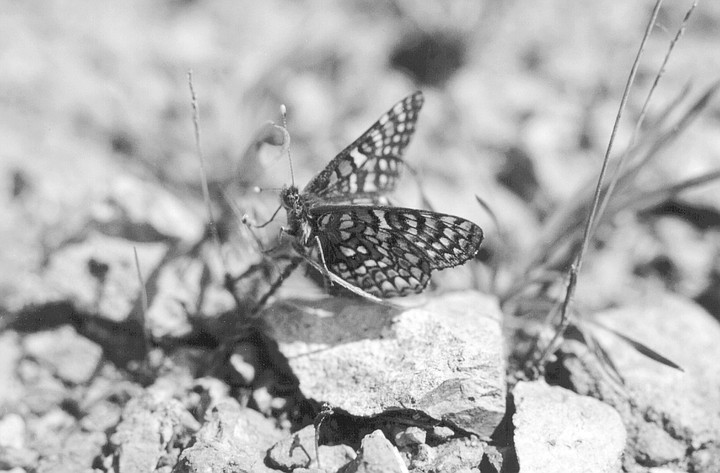
The Quino checkerspot may have been one of the most abundant butterflies in San Diego, Orange, and Western Riverside Counties during the early part of the 20th Century. Even as late as the '70s, biologists would talk about driving to Otay Mesa and having hundreds of Quinos smashed against their windshields at the end of the day. Today the Quino has been reduced to seven or eight populations in southwestern Riverside and south San Diego County.
By Keith Grier, July 16, 1998 | Read full article


It was sheer proximity that charmed me. His claws were as thin as embroidery floss unraveled, and he had a wisp of grass on his head, which gave him an agreeably foolish air. If he hadn’t been so terrified, I might have touched his smooth-skinned head, which was thinner than my index finger, or his oval body, barely two inches long. His tail was longer than the rest of him, and it narrowed to a fine, dusty cord.
By Laura McNeal, June 27, 1996 | Read full article

If, by some chance, you are bitten by a tarantula, or a Hairy Mygalomorph, fear not. “They have very little venom, if any," said Faulkner. “If you are bitten you can expect just a localized reaction and two fang marks. Their bite is probably less harmful than a bee sting. There are some in South America that are considered deadly, but when I say that. I'm referring to a case where someone had an allergic reaction."
By MertonGaudette, Jan.26, 1978 | Read full article

I think San Diego is more beautiful because of them, creatures with wingspans so wide that they seem to wobble when they beat; who glide low and heavily and smoothly like elegant patrol planes; who can climb so effortlessly and then drop like stones to the water surface, creating splashes so huge that each dive is a separate comedy. But I wonder if it would have made a difference if pelicans had simply vanished from the globe?
By Jeannette De Wyze, April 19, 1979 | Read full article

“Moths will occasionally show up. For instance, someone had purchased a home in the Firestone area of Los Angeles. Back of the house, there was an old shed, and the new owners noticed something sticking out of the ground. They dug around, and there was a human foot. Police came, exhumed the body. The body had been wrapped in a wool blanket, and as the police were unwrapping it, moths flew out of its abdominal cavity.”
By Judith Moore, May 17, 1990 | Read full article

“They couldn’t kill them with any of the biological toxins, nor with botulism or anthrax. The condors have a tremendous immune system. There’s almost nothing they can’t eat. They hunt with their noses, and the deader something is, the better they like it. So perhaps the California condor holds the genetic key to improve our own immune system? Who is anyone to say that we can let condors die out because all they do is eat dead stuff?”
By Stephen Dobyns, Sept. 28, 1995 | Read full article

Six days later, on a morning when the air was light blue, the weasel left his kill on the driveway, a young opossum so dead that his stiff tail seemed to grow straight out of the concrete. I say the weasel killed him, but I’m going by his bad reputation in hen houses, his preference for blood and brains when food is plentiful, his tendency to grab the neck and bite the soft parts of the skull.
By Laura McNeal, Oct. 3, 1996 | Read full article

He was tidy about it, really, as far as mollusk-eating permits. He held the shell in both hands and sat like a quarterback at an all-you-can-eat buffet. When he succeeded, as he munched, in pulling the snail out, the shell fell away whole, which may have given him the thrill that comes of pulling a crab leg out of its shell. I’m a carnivore, but I couldn’t eat so much as a fruit for two hours.
By Laura McNeal, Nov. 28, 1996 | Read full article

I didn’t want to cut off any heads. The truth about vermian regeneration is complicated. Take the beefy night crawler, who has 150 body segments. If you cut off 11 of his front segments, he’ll grow 4 or 5, and he’ll be shorter, but he’ll be fine. Hack off his behind to the 35th segment, and he’ll grow a new tail end, but a cut after the 11th and before the 36th segment is almost always fatal.
By Laura McNeal, June 12, 1997 | Read full article

A few days later, we noticed rats in the carport. They ran along the cupboards when we parked our cars. They scurried along the stacks of lumber, balanced on coils of irrigation hose, and tore soft cardboard from boxes of nails. They no longer bore any resemblance to Stuart Little. We killed them with blue cubes of rat poison that makes them bleed to death internally. By Sunday, the carport was still.
By Laura McNeal, Dec. 11, 1997 | Read full article

The only pleasure I saw him take was in water. He loved fresh water. He like to stick his whole head in the saucer and submerge himself. He stayed utterly still, soaking, for three to five minutes, his behind raised up on the lip of the saucer, five legs in the water and three on the old vermiculite. Then he crawled around for a while, leg over leg over leg over leg over leg over leg.
By Laura McNeal, Jan. 22, 1998 | Read full article

The Quino checkerspot may have been one of the most abundant butterflies in San Diego, Orange, and Western Riverside Counties during the early part of the 20th Century. Even as late as the '70s, biologists would talk about driving to Otay Mesa and having hundreds of Quinos smashed against their windshields at the end of the day. Today the Quino has been reduced to seven or eight populations in southwestern Riverside and south San Diego County.
By Keith Grier, July 16, 1998 | Read full article
Comments